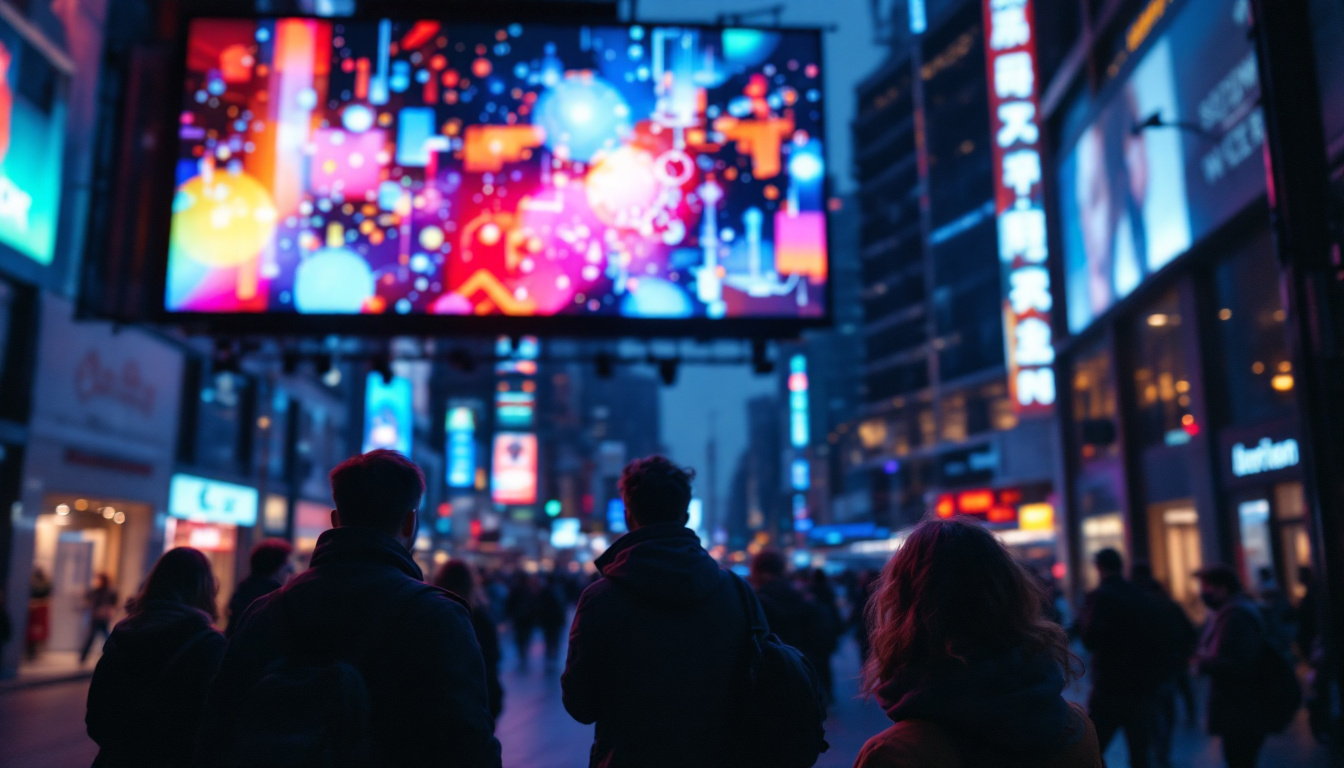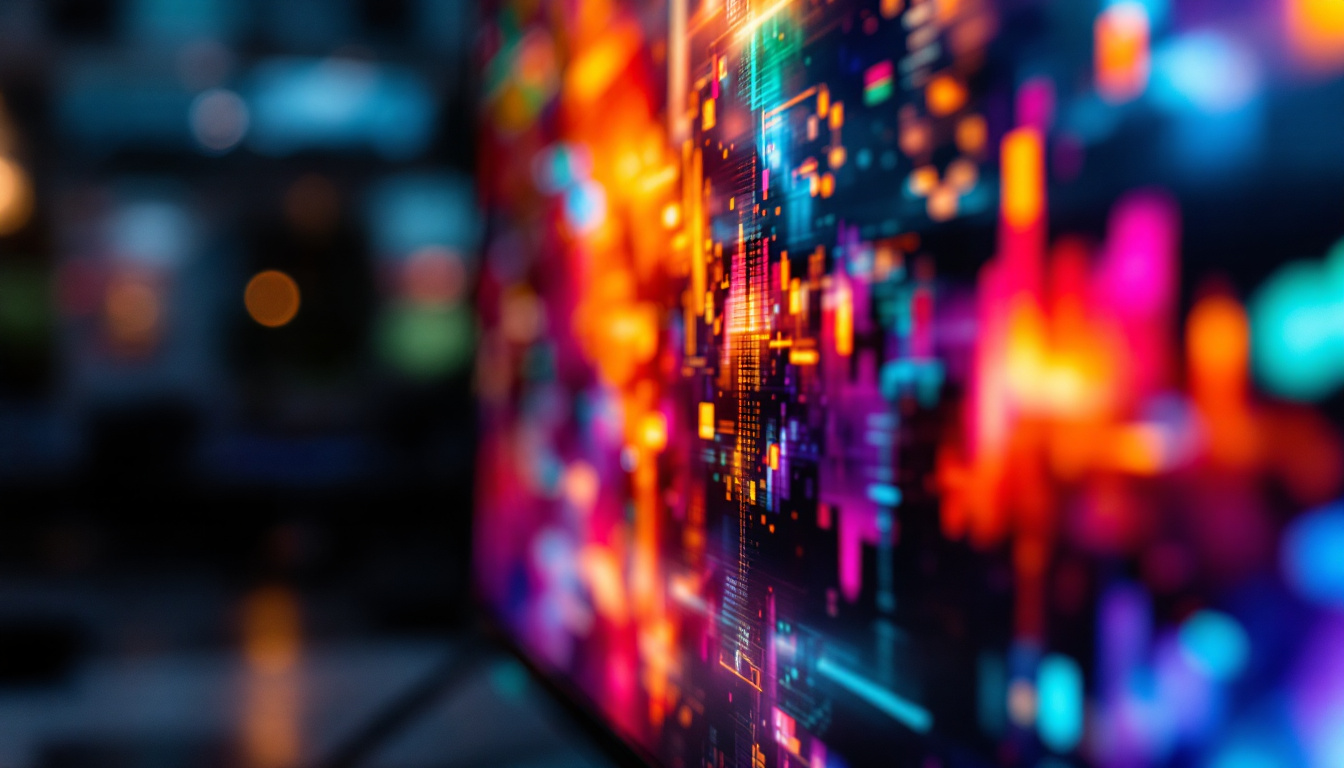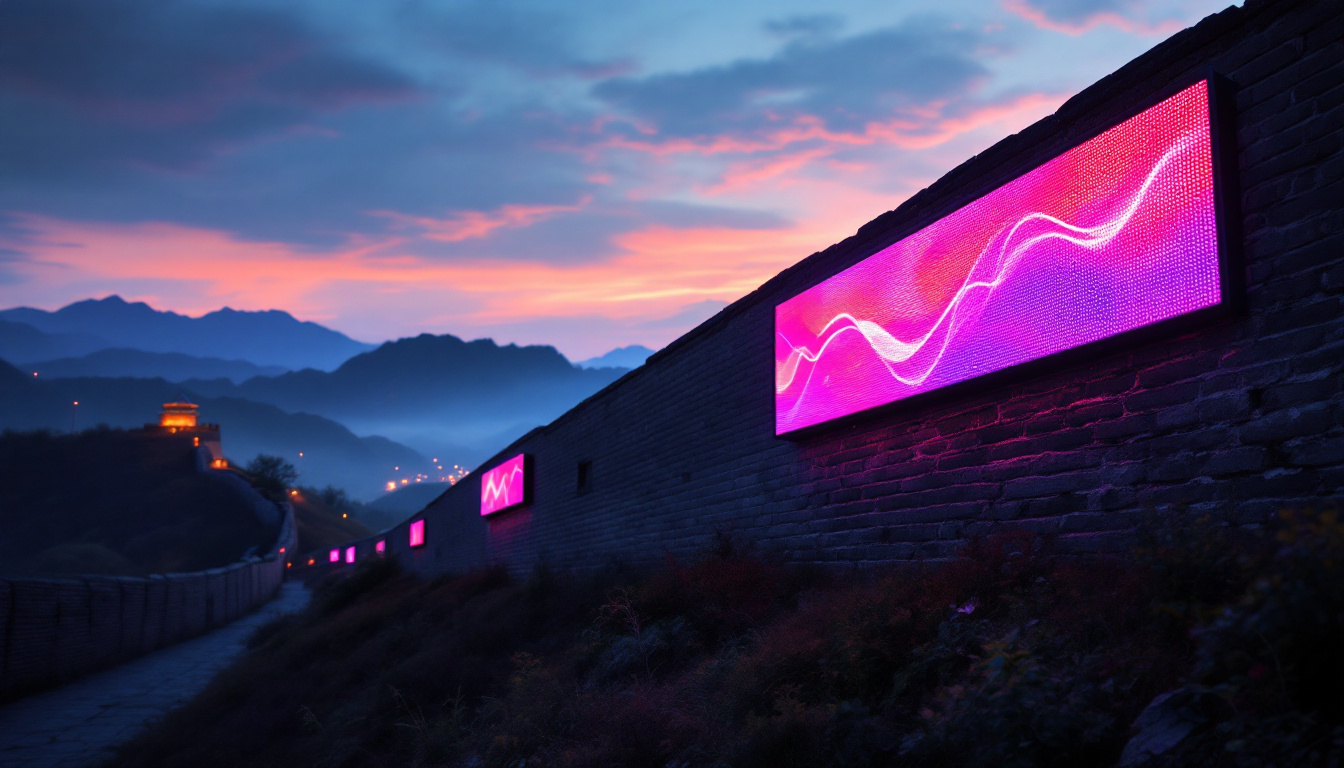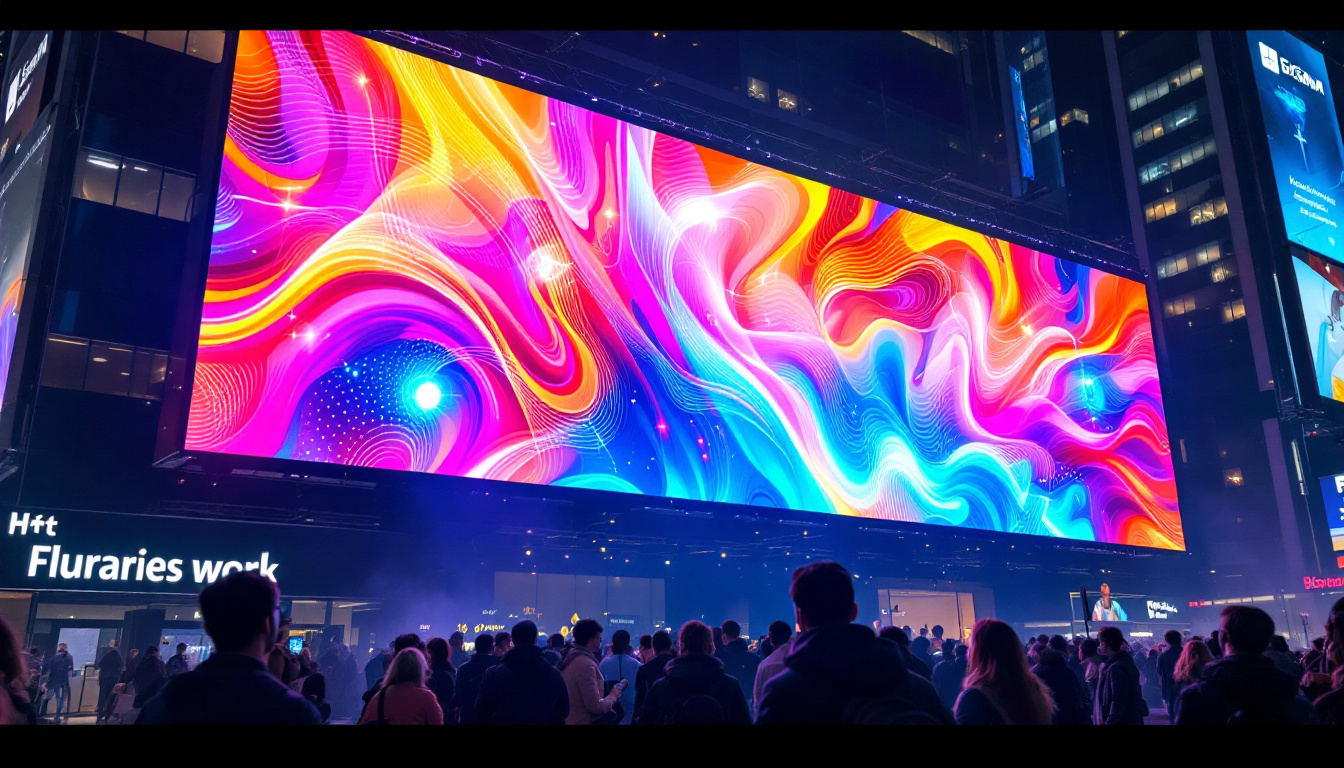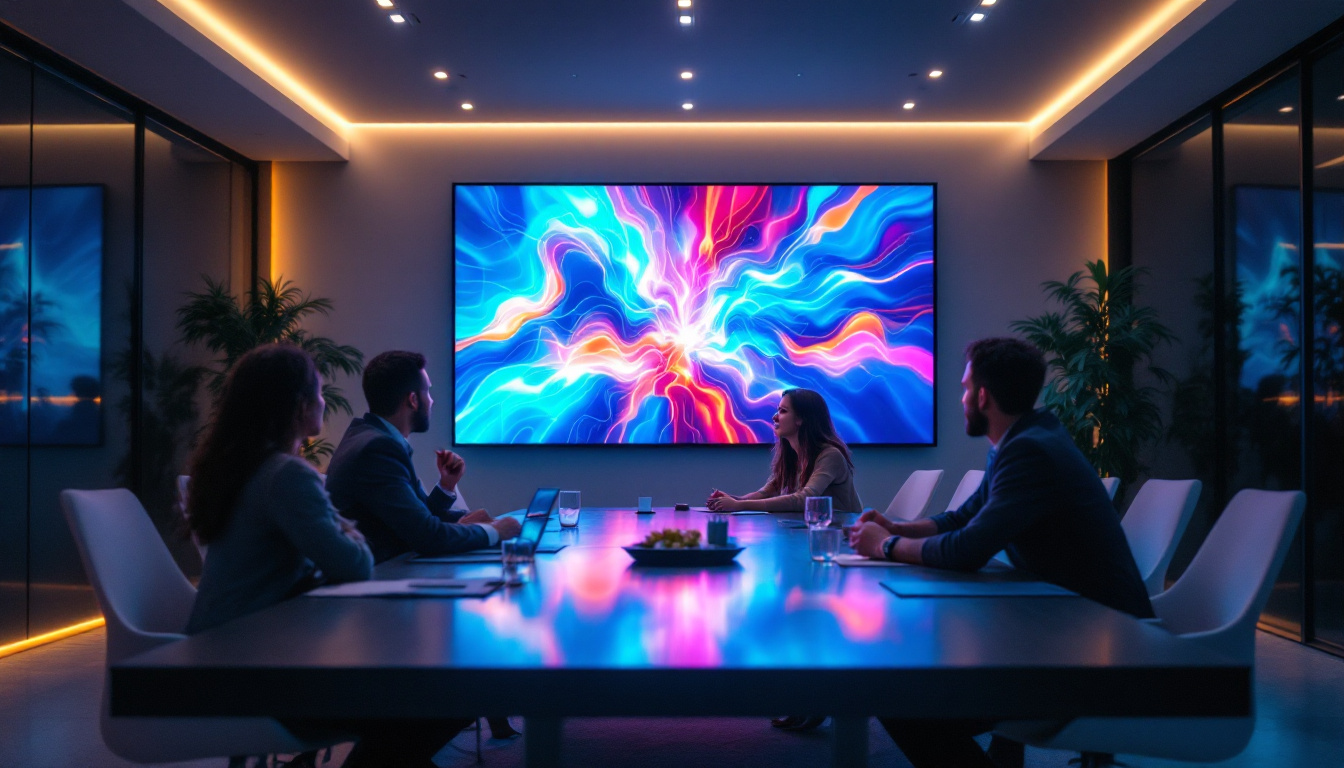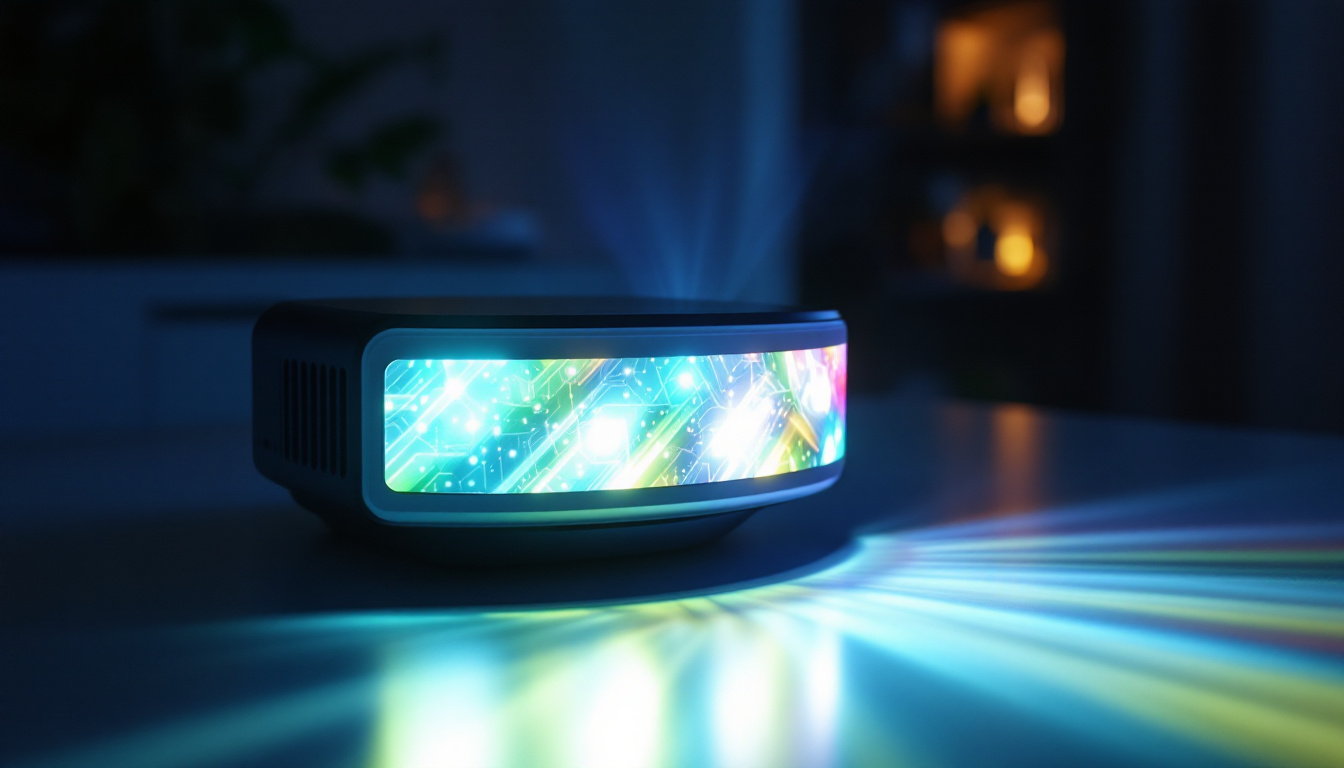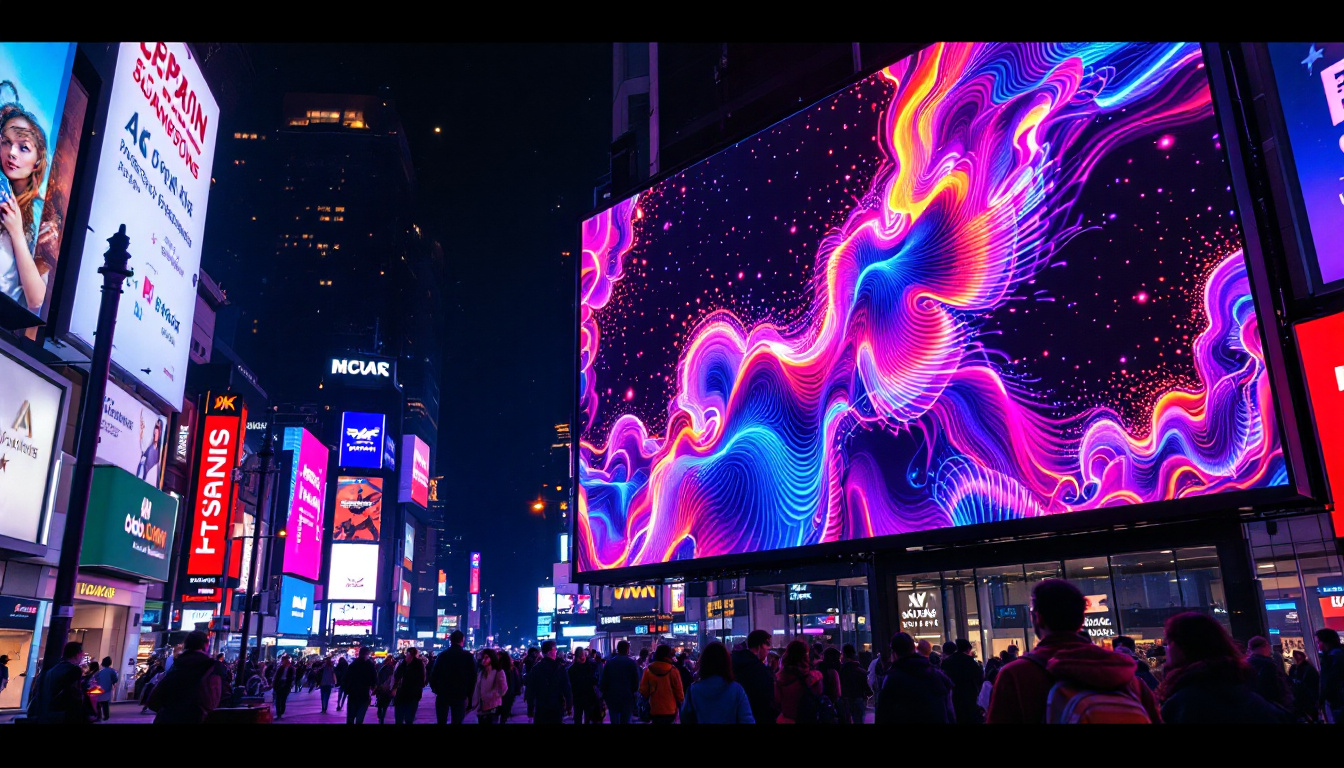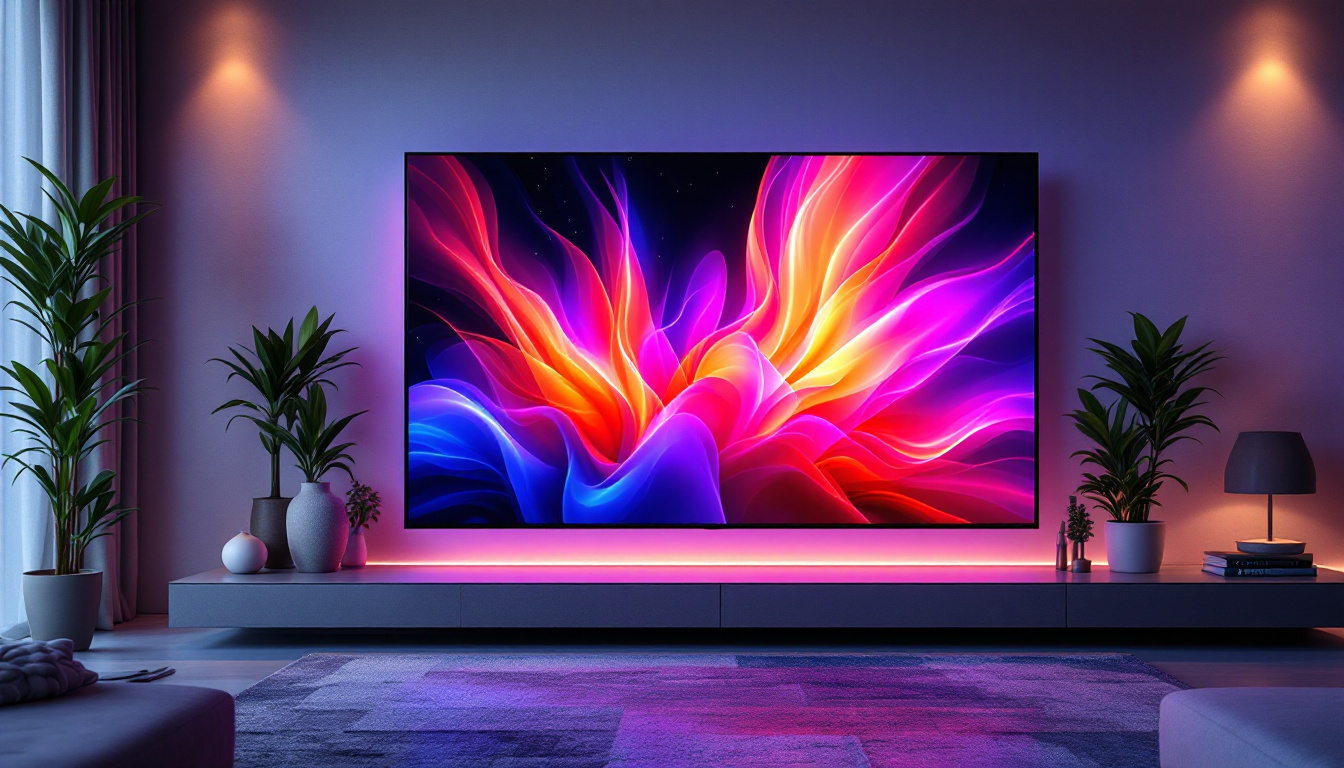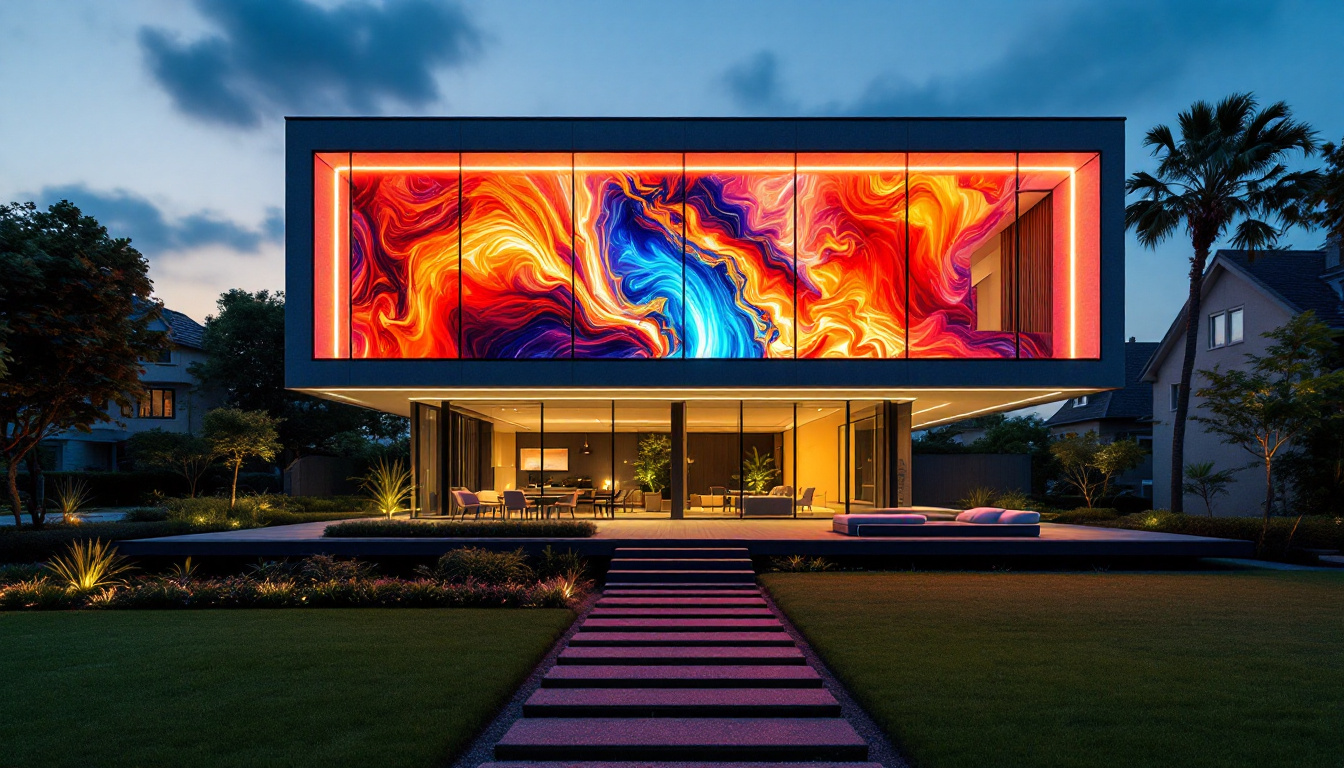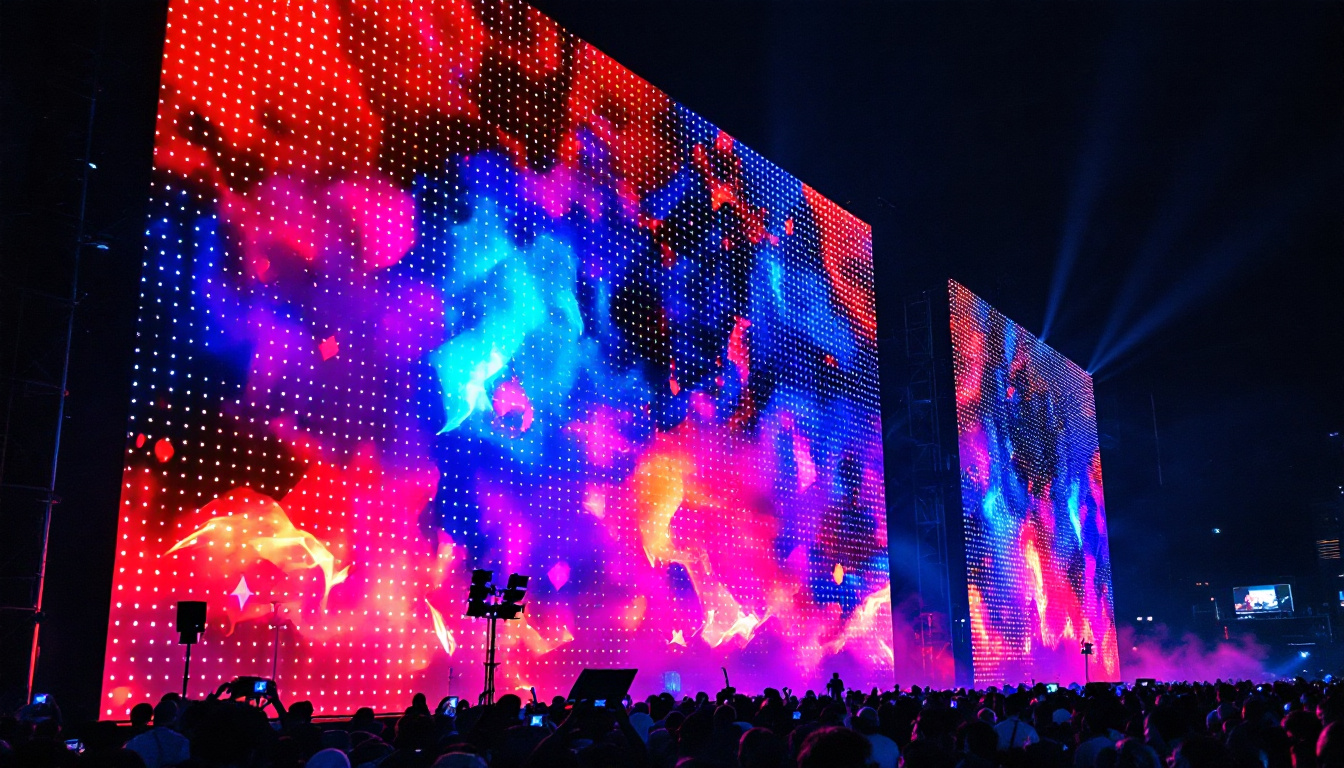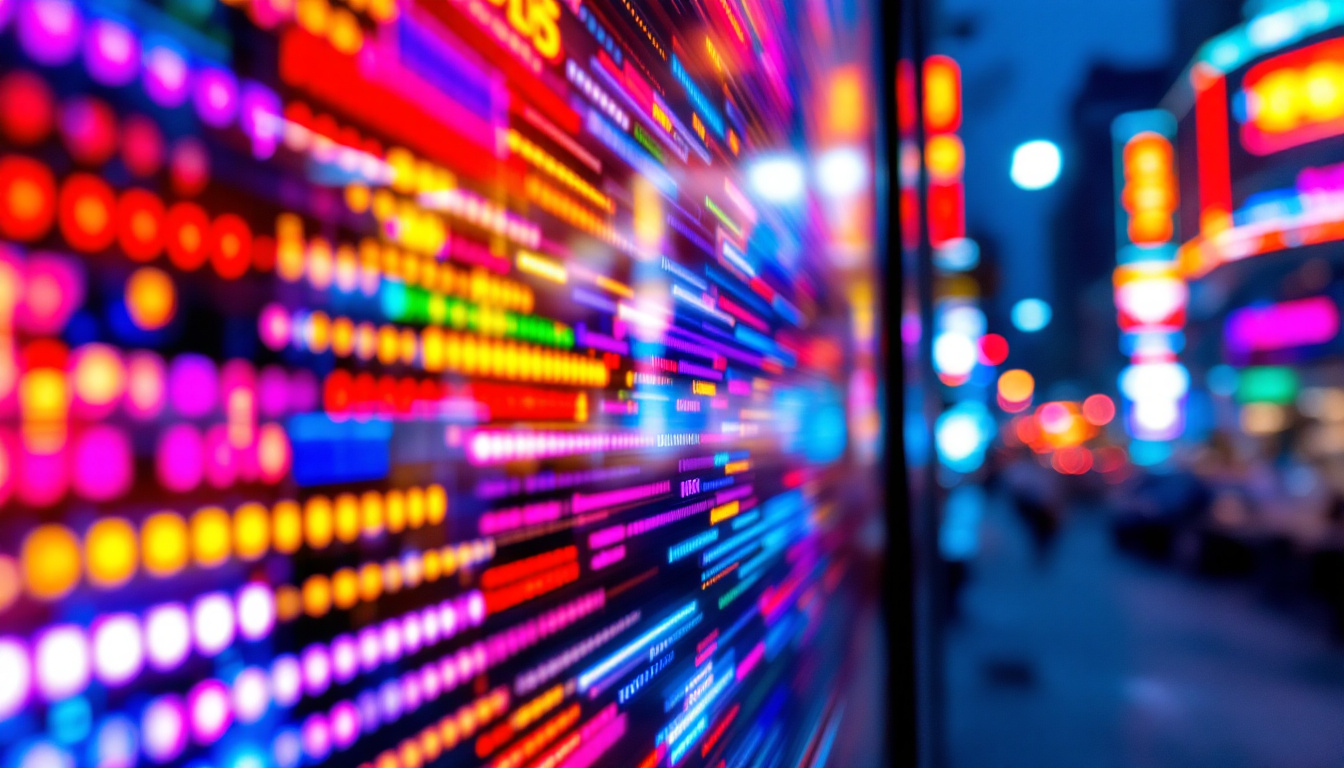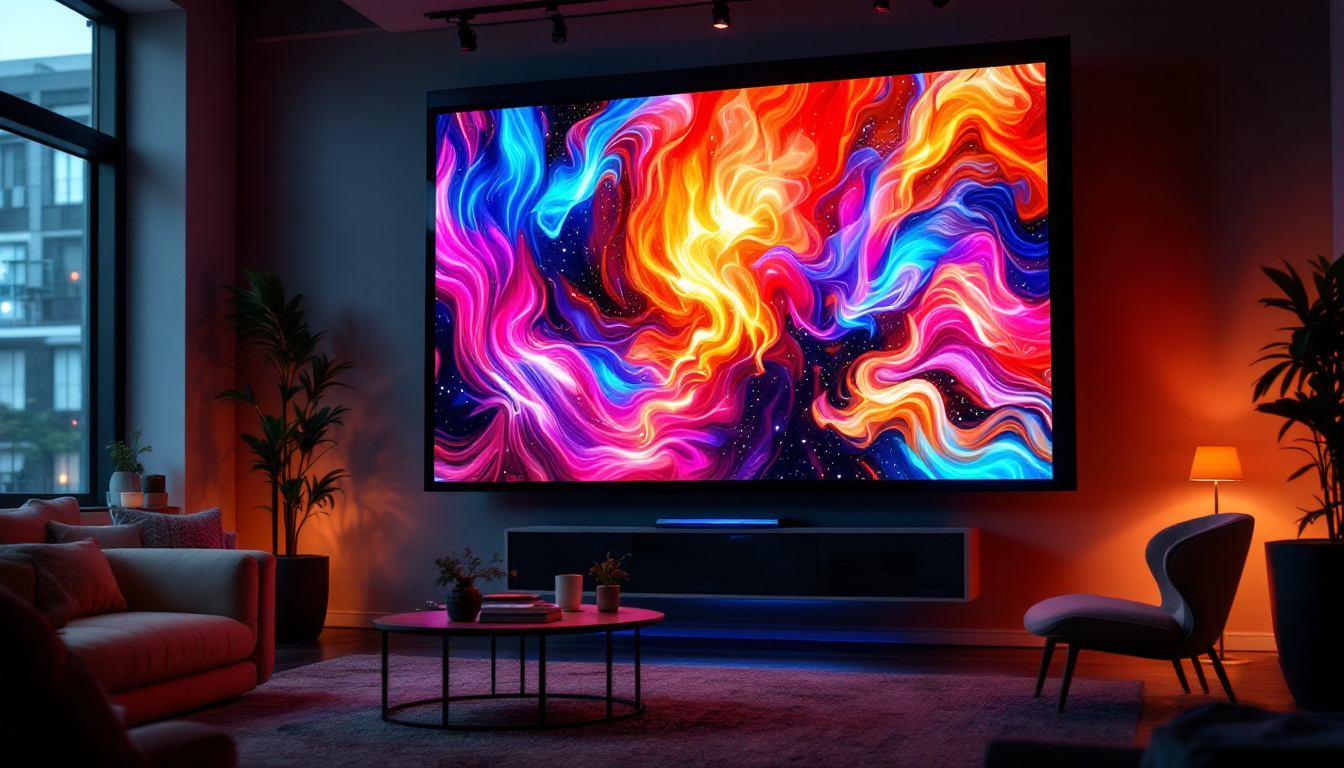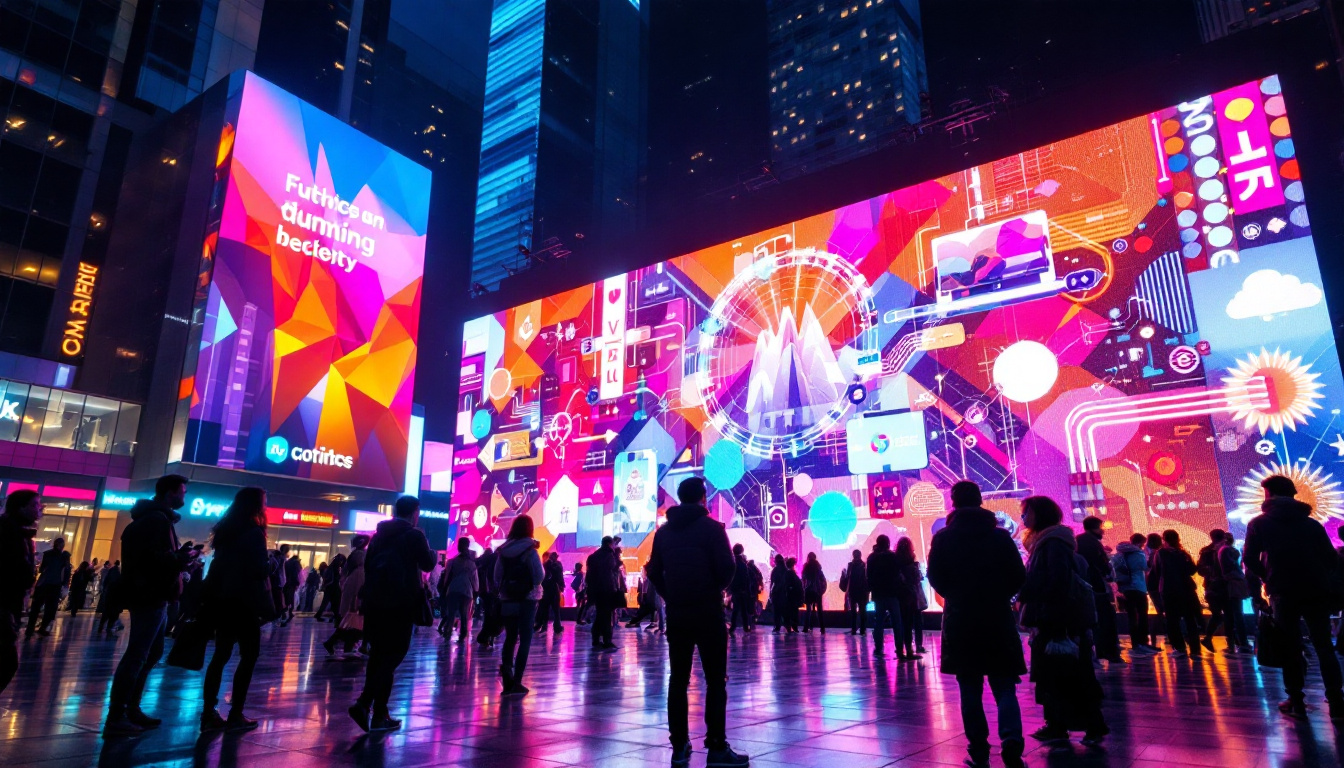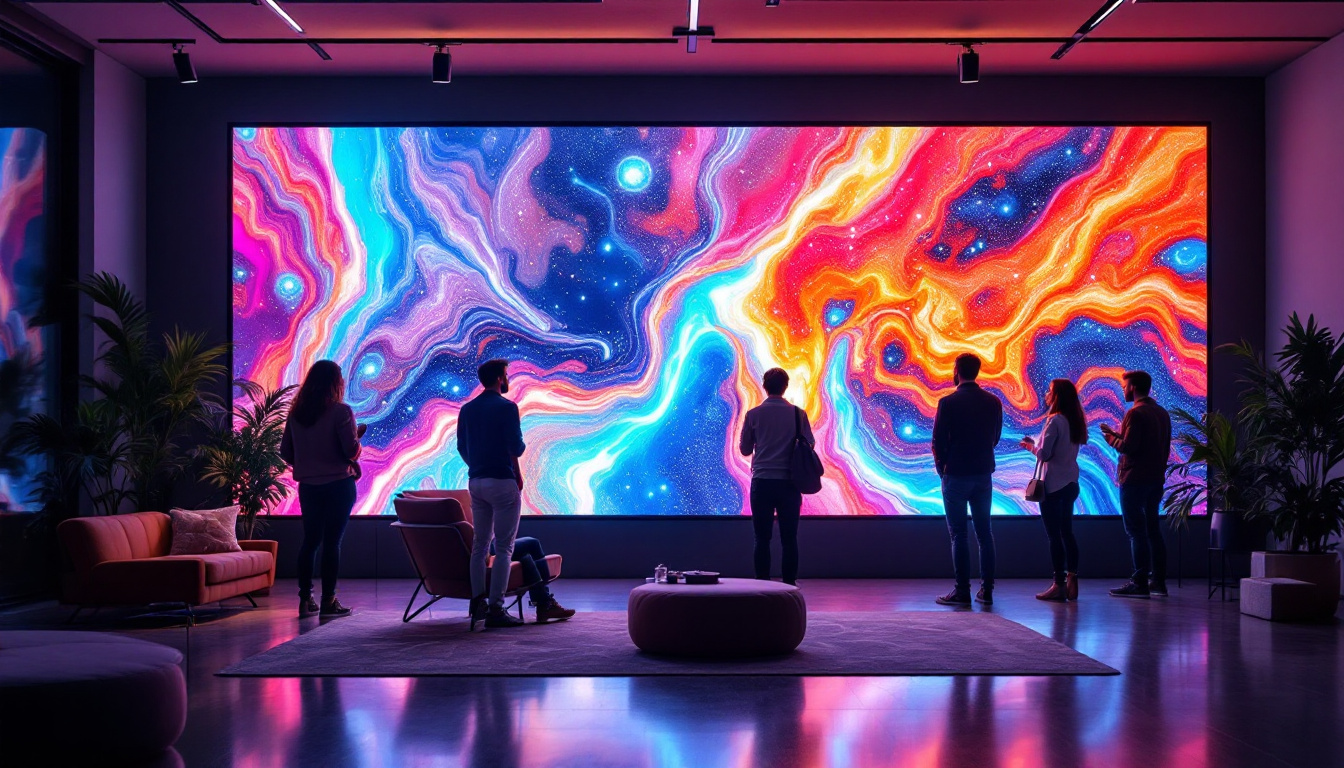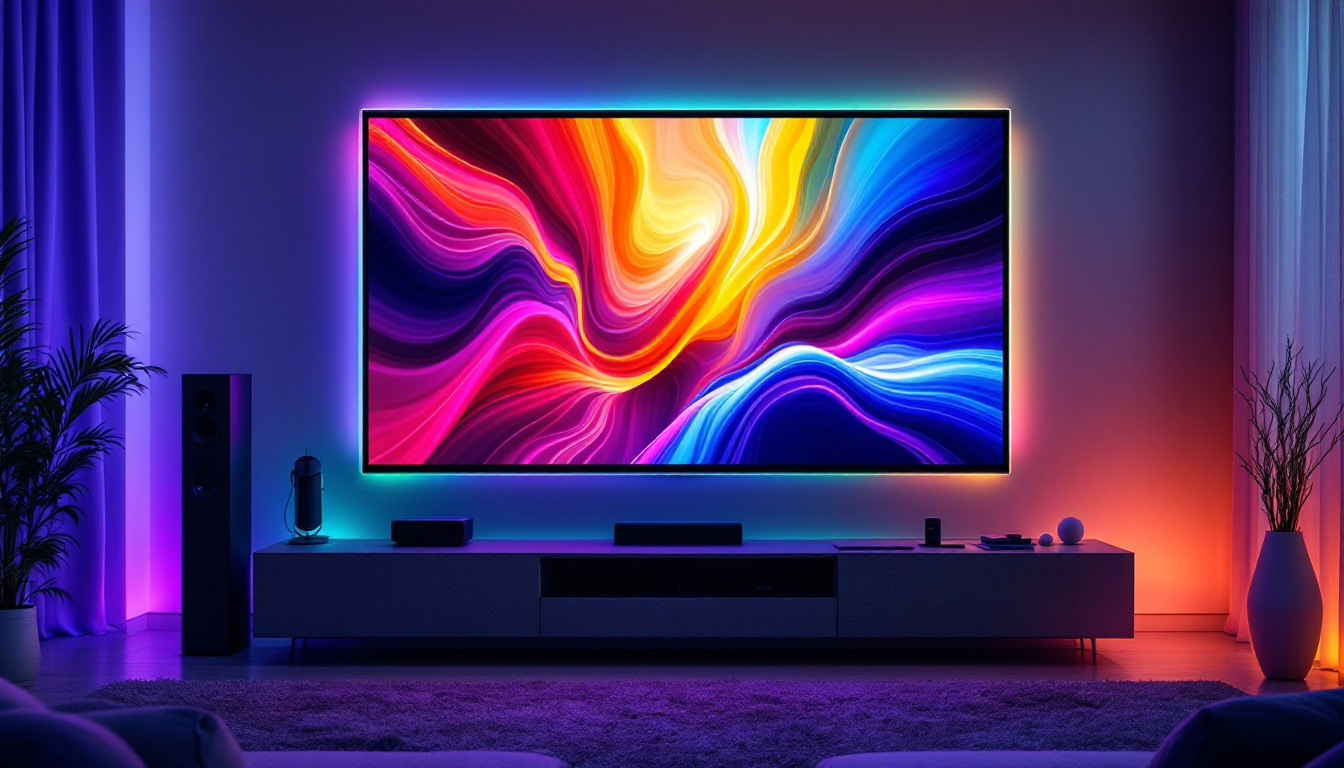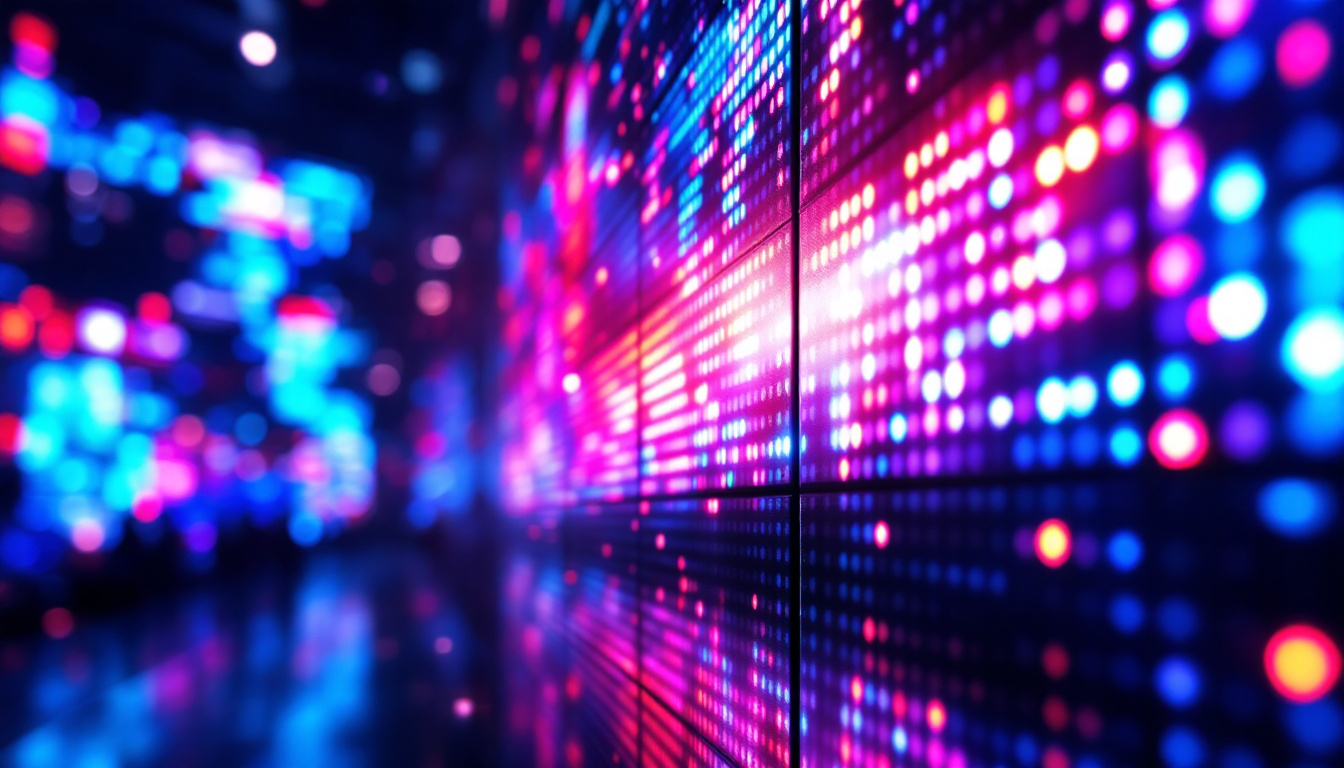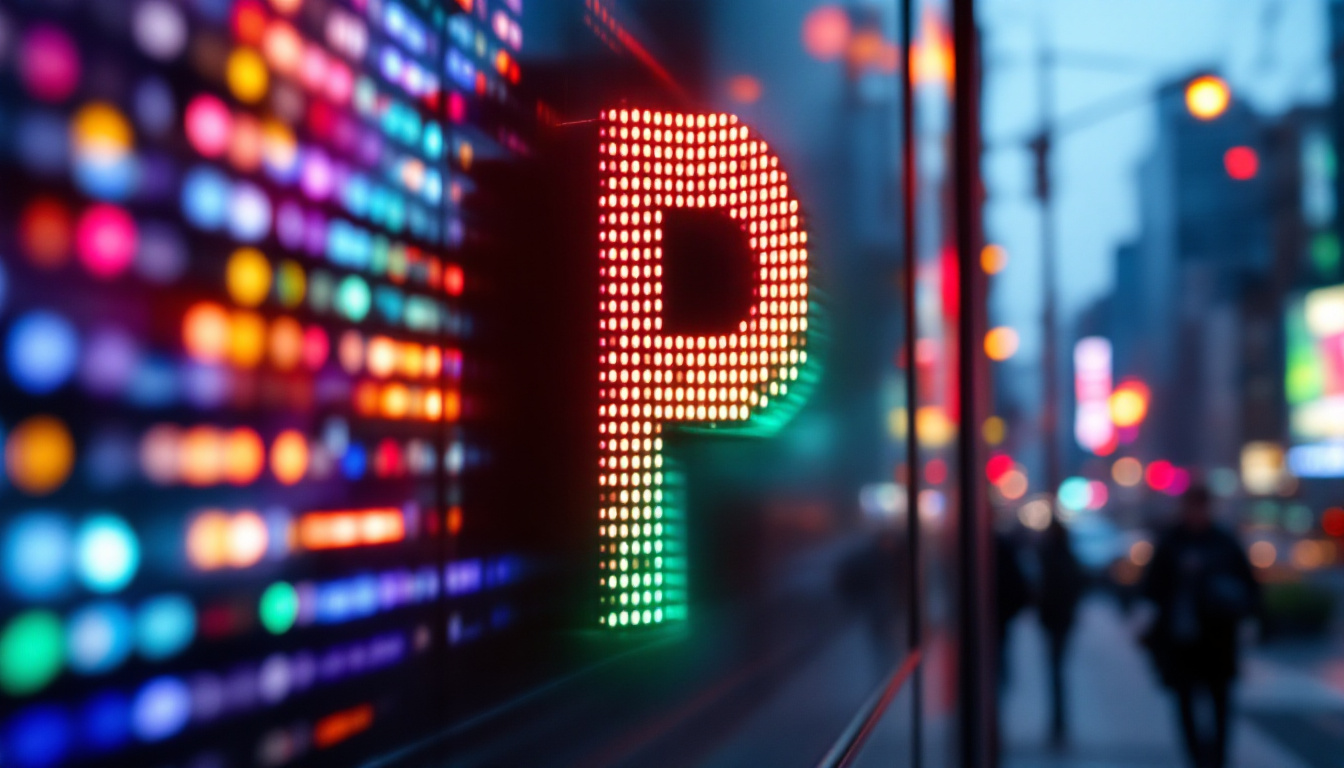In the world of digital advertising and visual communication, LED displays have emerged as a powerful tool for businesses and organizations alike. These vibrant screens are not just eye-catching; they are also versatile and efficient, making them a preferred choice for various applications. This article delves into the intricacies of LED displays, exploring their technology, applications, and the advantages they offer.
Understanding LED Technology
LED, or Light Emitting Diode, technology has revolutionized the way visual information is presented. Unlike traditional display technologies, LEDs emit light when an electric current passes through them. This fundamental principle underpins the functionality of LED displays, allowing for bright and colorful visuals. The efficiency of LED technology not only enhances the quality of images but also significantly reduces energy consumption compared to older technologies like incandescent and fluorescent lighting, making it a more sustainable choice for both consumers and businesses.
How LED Displays Work
At the core of an LED display are numerous tiny diodes that create pixels. Each pixel can emit red, green, or blue light, and by adjusting the intensity of these colors, a wide spectrum of hues can be produced. This RGB (Red, Green, Blue) model is pivotal in generating the full range of colors seen on the screen. The precise control over each pixel allows for dynamic content that can adapt to various environments, making LED displays ideal for everything from dynamic advertising to immersive gaming experiences.
The arrangement of these pixels on a display panel determines its resolution. Higher resolutions mean more pixels per inch, resulting in sharper images and clearer text. This is particularly important for applications where detail is crucial, such as in advertising or broadcasting. Additionally, advancements in technology have led to the development of 4K and even 8K LED displays, which offer unprecedented clarity and detail, allowing for a more engaging viewing experience that draws viewers in.
Types of LED Displays
LED displays come in various types, each suited for different environments and purposes. The most common types include:
- Indoor LED Displays: These are designed for use in controlled environments like shopping malls, conference rooms, and theaters. They typically have higher pixel density, providing clear images even at close viewing distances. Indoor displays often feature advanced color calibration technologies to ensure that the colors remain vibrant and true to life under artificial lighting conditions.
- Outdoor LED Displays: Built to withstand harsh weather conditions, outdoor displays are larger and more robust. They feature lower pixel density but are designed to be visible from greater distances. Many outdoor models incorporate protective coatings to guard against UV rays and moisture, ensuring longevity and performance in varying climates.
- Transparent LED Displays: These innovative displays allow viewers to see through them while still displaying vibrant images. They are often used in retail settings to enhance product visibility. By combining transparency with high-resolution visuals, these displays create a unique shopping experience, allowing brands to showcase their products while maintaining an open and inviting atmosphere.
Applications of LED Displays
LED displays are incredibly versatile, finding applications in various sectors. Their adaptability makes them suitable for both commercial and artistic endeavors.
Advertising and Marketing
One of the most prominent uses of LED displays is in advertising. Businesses leverage these screens to showcase dynamic content that captures the attention of passersby. The ability to change advertisements in real-time allows for targeted marketing strategies, maximizing engagement and conversion rates.
From large billboards in urban centers to smaller screens in retail stores, LED displays provide an effective platform for brands to communicate their messages. The vivid colors and high brightness ensure that advertisements stand out, even in direct sunlight.
Additionally, LED displays can be integrated with social media feeds, allowing brands to display user-generated content and real-time promotions. This interactivity not only fosters a sense of community but also encourages customers to engage with the brand on multiple platforms. Furthermore, the analytics capabilities of LED advertising enable businesses to track viewer engagement, optimizing their campaigns for better performance.
Entertainment and Events
In the entertainment industry, LED displays play a crucial role in enhancing experiences. Concerts, festivals, and sporting events utilize large LED screens to provide audiences with a closer view of performances and activities. This not only improves visibility but also adds an immersive element to the event.
Moreover, LED technology is used in stage productions for backdrops and lighting effects, allowing for creative storytelling through visual elements. The flexibility of LED displays enables event organizers to create dynamic environments that captivate audiences.
In addition to live events, LED displays are also becoming increasingly popular in theme parks and attractions. These screens are used to create stunning visual effects in rides and shows, enhancing the overall experience for visitors. The ability to synchronize LED displays with sound and lighting systems further amplifies the excitement, making each visit a unique adventure.
Corporate and Educational Settings
In corporate environments, LED displays are increasingly used for presentations, training sessions, and internal communications. Their ability to present information clearly and engagingly makes them a valuable asset in boardrooms and conference centers.
Educational institutions are also adopting LED technology for classrooms and auditoriums. These displays facilitate interactive learning experiences, allowing educators to present multimedia content effectively. The bright and clear visuals help maintain student engagement, enhancing the overall learning experience.
Furthermore, LED displays can be utilized for digital signage within educational institutions, providing real-time updates on schedules, events, and announcements. This not only keeps students informed but also fosters a sense of community within the school. The integration of interactive features, such as touch screens, allows for collaborative learning, enabling students to engage with the material in a hands-on manner, thereby reinforcing their understanding and retention of the subject matter.
Advantages of LED Displays
The popularity of LED displays can be attributed to a range of advantages they offer over traditional display technologies. Understanding these benefits can help businesses and organizations make informed decisions about their visual communication strategies.
Energy Efficiency
One of the standout features of LED displays is their energy efficiency. Compared to traditional lighting technologies, LEDs consume significantly less power while delivering brighter visuals. This not only reduces operational costs but also aligns with sustainability goals, making them an environmentally friendly choice.
For businesses that operate large displays, the energy savings can be substantial over time. This efficiency is particularly beneficial for outdoor displays that run continuously, further enhancing their appeal.
Longevity and Durability
LED displays are known for their longevity. With a lifespan that can exceed 100,000 hours, they require less frequent replacements compared to other display types. This durability is especially important for outdoor applications, where exposure to the elements can lead to wear and tear.
Furthermore, LED technology is less susceptible to damage from shocks and vibrations, making it suitable for various environments, including high-traffic areas and event venues.
High Brightness and Contrast
The brightness of LED displays is another significant advantage. They can produce vivid colors and high contrast ratios, ensuring that content remains visible even in bright sunlight. This feature is critical for outdoor advertising where visibility can be compromised by environmental factors.
The ability to adjust brightness levels also allows for versatility in different settings, making LED displays suitable for both indoor and outdoor use. This adaptability contributes to their widespread adoption across various industries.
Challenges and Considerations
While LED displays offer numerous benefits, it is essential to consider potential challenges associated with their use. Understanding these challenges can help businesses make informed decisions regarding their implementation.
Initial Investment Costs
One of the primary challenges of LED displays is the initial investment cost. High-quality LED technology can be expensive, and businesses must weigh the upfront costs against the long-term benefits. While the energy savings and longevity of LED displays can offset these costs over time, the initial expenditure may deter some organizations.
However, it is crucial to view LED displays as an investment in brand visibility and engagement. The return on investment can be substantial, particularly for businesses that rely heavily on advertising and customer interaction.
Technical Expertise
Another consideration is the need for technical expertise in setting up and maintaining LED displays. While many manufacturers provide support, businesses may require specialized knowledge to optimize the performance of their displays fully.
Training staff or hiring professionals to manage these systems can add to the overall cost. However, investing in the right expertise ensures that the displays function optimally, maximizing their impact on the target audience.
Future Trends in LED Display Technology
The LED display industry is continually evolving, driven by technological advancements and changing consumer preferences. Keeping an eye on future trends can help businesses stay ahead of the curve and leverage new opportunities.
Integration with Smart Technology
As smart technology becomes more prevalent, the integration of LED displays with IoT (Internet of Things) devices is on the rise. This connectivity allows for real-time data sharing and content updates, enabling businesses to tailor their messaging based on audience behavior and preferences.
For example, retail stores can use smart LED displays to showcase promotions based on inventory levels or customer demographics. This level of interactivity enhances customer engagement and drives sales.
Advancements in Display Quality
Improvements in LED technology continue to enhance display quality. Innovations such as microLED and miniLED are paving the way for even higher resolutions and better color accuracy. These advancements will enable businesses to create stunning visuals that captivate audiences.
As display technology improves, the applications for LED displays will expand, opening new avenues for creativity and engagement across various sectors.
Conclusion
LED displays have transformed the landscape of visual communication, offering a dynamic and effective means of conveying information. Their versatility, energy efficiency, and durability make them an attractive option for businesses across various industries.
As technology continues to evolve, the potential for LED displays will only grow. By staying informed about trends and advancements, organizations can harness the power of LED technology to enhance their marketing strategies, improve customer engagement, and ultimately drive success.
Discover LumenMatrix’s Innovative LED Solutions
Ready to elevate your visual communication strategy with the latest in LED display technology? Look no further than LumenMatrix, where innovation meets impact. Our comprehensive range of LED display modules, including Indoor and Outdoor LED Wall Displays, Vehicle LED Displays, LED Poster Displays, LED Sports Displays, Floor LED Displays, Custom LED Displays, All-in-One LED Displays, and LED Transparent Displays, are designed to captivate your audience and amplify your message. Experience the future of digital signage with LumenMatrix and transform the way your business connects with the world. Check out LumenMatrix LED Display Solutions today and start your journey towards unparalleled brand visibility.

